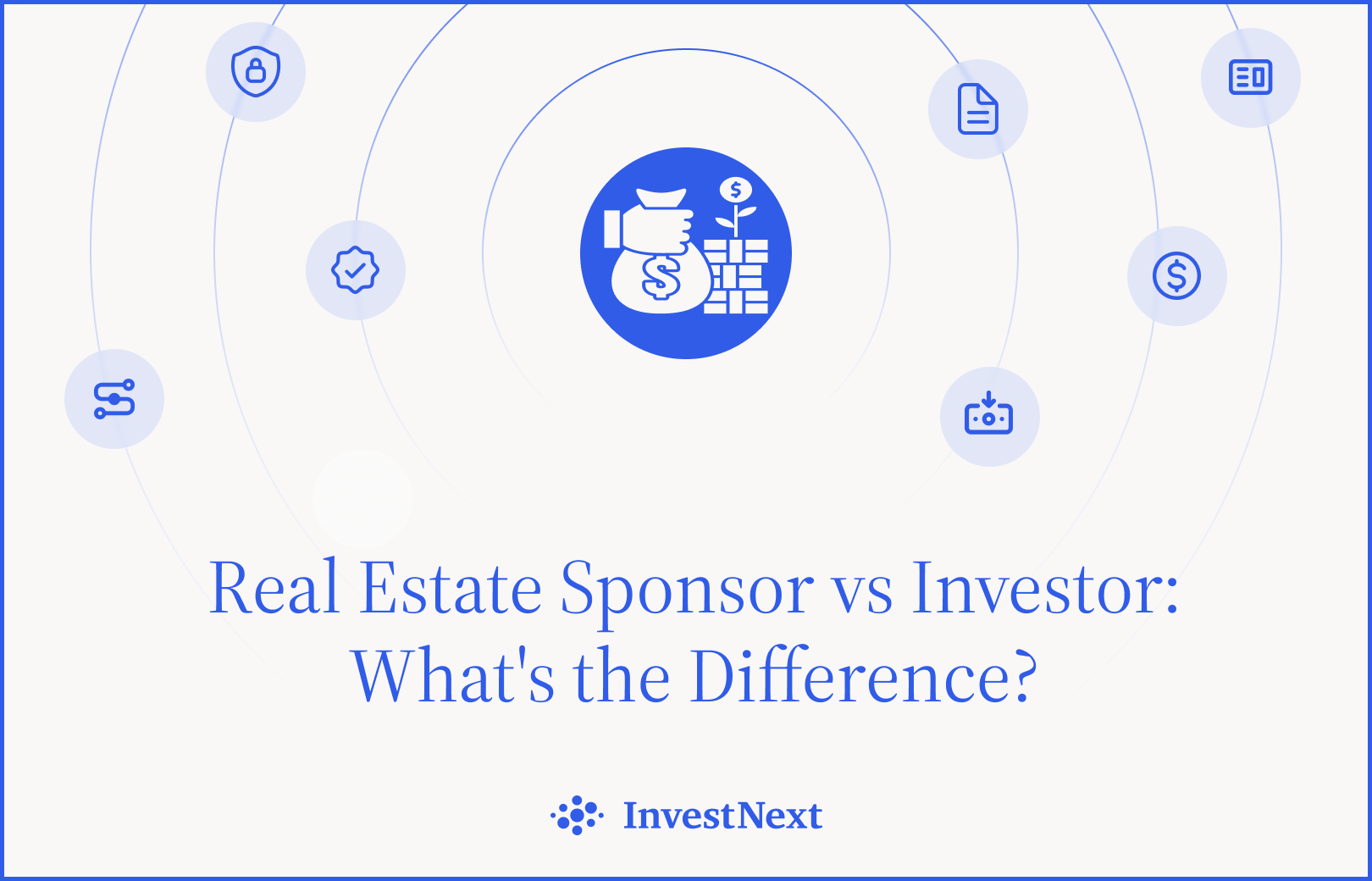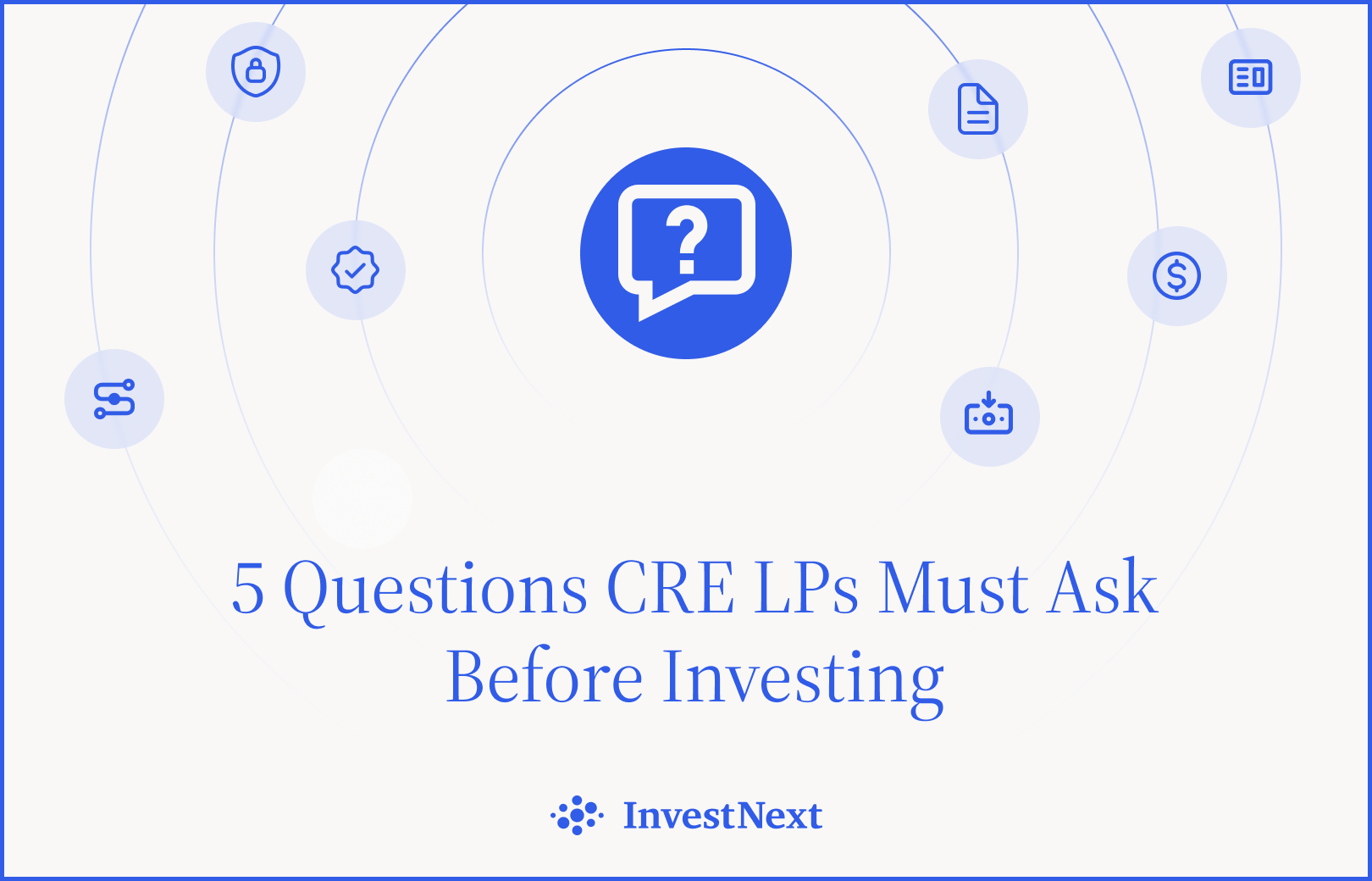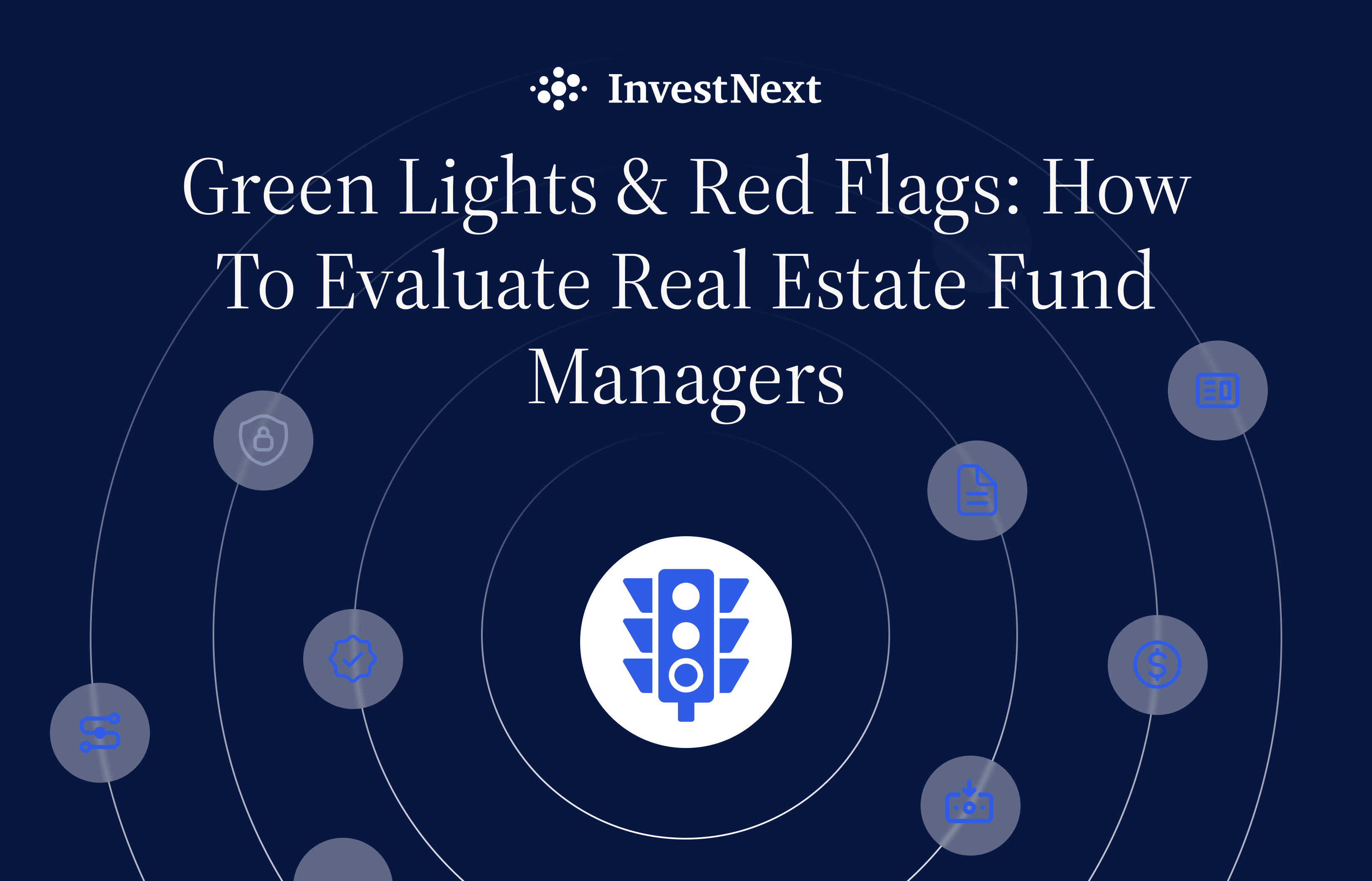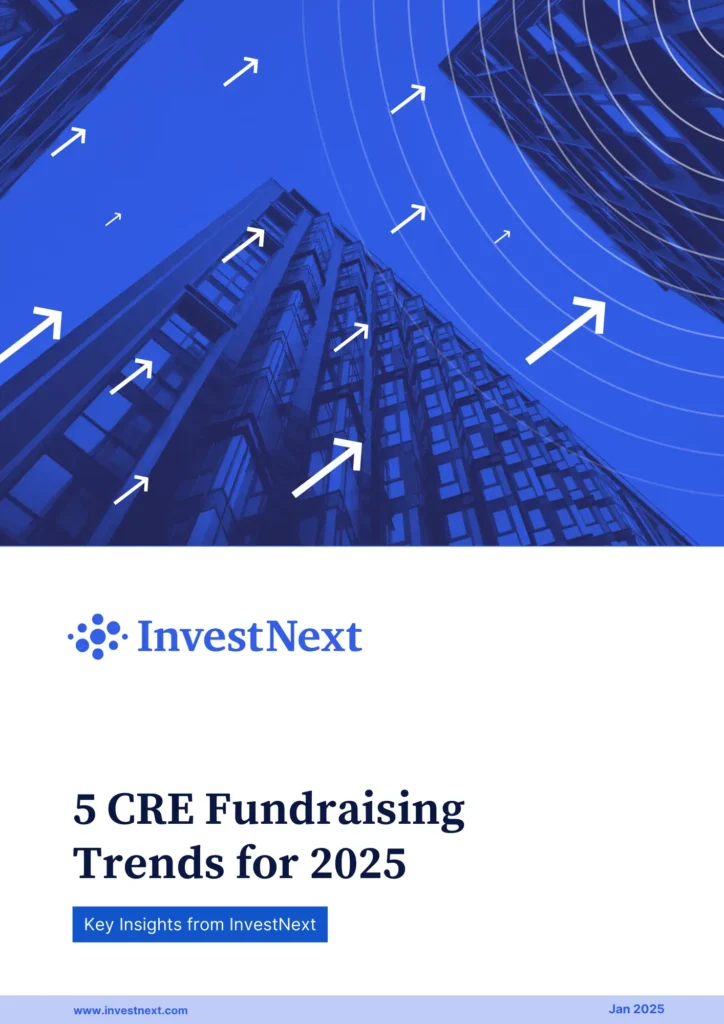Real estate transaction volumes fell 28% in 2024 compared to 2023, reaching their lowest point in a decade. This market shift highlights the important difference between sponsors and investors in commercial real estate deals.
The structure of these partnerships impacts every aspect of a project. Sponsors find opportunities and handle the due diligence and management, while investors supply the capital needed to purchase and improve properties.
Sponsors typically earn through multiple fee streams, including acquisition fees and asset management fees ranging from 0.75% to 1.5% of gross revenues. With interest rates at current levels, deal economics have changed significantly – financing costs more, investors are more selective, and transparency matters more than ever.
Want to learn more about the differences between real estate sponsors and investors? Let’s explore these vital roles and see how they combine forces to build successful real estate ventures.
The Real Estate Sponsor Role
Real estate sponsors architect investment deals and take an active role to find, acquire, and manage properties. They bring expertise, market knowledge, and operational capability to the table, unlike passive investors.
These sponsors review dozens or maybe even hundreds of deals to select promising opportunities. They need a full picture that covers environmental testing and financial performance analysis. Most sponsors put in 1-5% of the total equity in a deal. Some invest up to 20% of their own capital. This shows their steadfast dedication and helps line up their interests with other investors.
Sponsors take on the most important responsibilities that include:
- Securing financing and often providing personal guarantees on debt
- Forming the ownership entity (LLC or trust)
- Overseeing property management and construction
- Managing investor relations and providing regular financial updates
- Executing the business plan to maximize returns
Sponsors earn compensation through multiple channels. They charge acquisition fees based on purchase price. Their asset management fees range from 0.75% to 1.5% of gross revenues. Construction management fees run about 5-6% of renovation costs. Sponsors also earn a “promote” or “carried interest” – a performance-based reward that increases their profit share once returns exceed preset thresholds.
Sponsor-investor relationships work through a General Partner/Limited Partner structure. Sponsors (GPs) handle all active management duties. This lets investors (LPs) stay completely passive while still benefiting from real estate ownership. The structure creates a partnership where sponsors’ expertise and time combine with investors’ capital to create value.
The Real Estate Investor Position
Real estate investors supply capital without managing daily operations, unlike sponsors. They assess opportunities based on their risk tolerance and investment goals instead of executing business plans themselves.
Limited Partners (LPs) represent most investors. This structure protects them by limiting their liability to their invested amount. They can benefit from real estate ownership without facing extra financial risks or operational duties.
Real estate investments fall into four distinct risk-return profiles:
- Core investments – These are the safest investments with high-quality properties and credit tenants already in place. Conservative investors seeking steady income prefer core assets because they generate reliable, predictable returns.
- Core Plus investments – These properties are like core assets but carry slightly more risk. They generate cash flow right after purchase and offer some chances to boost rents through moderate renovations. The tenants are creditworthy but not quite at core investment levels.
- Value-Add investments – These properties need major renovations to restore cash flow. They appeal to investors who are comfortable with properties that might not generate immediate income. The higher risk comes with greater potential returns.
- Opportunistic investments – This is the riskiest category with substantial development or complete property repurposing. Projects might include new construction or adaptive reuse. Successful ventures can deliver annual returns of 20% or higher.
Passive real estate investors spend their time assessing opportunities, meeting sponsors, and reviewing deals. While they don’t manage properties directly, successful investors keep learning through industry resources and networking.
Investors remain vital to real estate ventures even as “silent partners.” They provide the capital that helps sponsors secure and develop promising properties.
The Sponsor-Investor Relationship
Trust and transparency are the foundations of productive sponsor-investor relationships. Successful sponsors know that strong investor relationships help them raise capital for projects and create long-term collaborations that benefit everyone involved.
Communication is the life-blood of these relationships. Sponsors usually give investors quarterly financial updates about their investment status. This open approach stops small issues from becoming big problems, so it builds trust and confidence in how sponsors manage things.
When investors look at potential sponsors, they should check their track record with similar assets and markets. This becomes crucial in 2024, as sponsors who have proven they can handle tough economic conditions might be better at managing today’s market uncertainties. A sponsor’s approach to handling risks – like economic downturns, rising interest rates, and construction delays – shows a lot about their management skills.
Partnerships need well-laid-out decision-making processes. The “RACI” methodology works well here – it shows who’s responsible, accountable, consulted, and informed for each decision. This framework prevents conflicts by setting clear roles in the partnership.
Technology makes these relationships smoother than ever. Professional investor portals like InvestNext help sponsors create a modern, user-focused experience. These tools let sponsors share documents, send updates, and track investment intent in one central hub. We reduced administrative work while making investors happier.
Both sides win when partnerships spell out terms, fees, roles, and responsibilities clearly. Investors should take a good look at offering memorandums with sponsor details, due diligence work, investment strategy, financial projections, and potential risks. Sponsors need to keep communication channels open and give honest updates about good news and challenges that pop up.
Conclusion
Real estate sponsors and investors work together in unique ways that lead to successful property ventures. Sponsors actively manage deals and share their expertise. Investors bring the capital that turns these opportunities into reality. Their partnership runs on clear communication, defined responsibilities, and mutual trust.
Today’s economic conditions demand clear understanding of these roles. Market data shows sponsor activity reached its lowest point in a decade during 2024, making expertise in navigating changing conditions more valuable.
Digital tools now connect sponsors and investors more efficiently than ever. Document sharing, financial reporting, and communications happen faster and with greater transparency, reducing paperwork while improving investor satisfaction.
The framework and management of sponsor-investor relationships determine investment outcomes. A clear definition of roles, responsibilities, and expectations creates the foundation for profitable real estate partnerships.
Want to see how top real estate firms manage investor relationships? Schedule a demo to learn how InvestNext helps sponsors streamline capital raising while providing investors with professional, transparent experiences.
FAQs
What is the difference between a real estate sponsor and an investor?
A real estate sponsor takes an active role in finding, acquiring, and managing properties, while an investor primarily provides capital without involvement in day-to-day operations. Sponsors contribute expertise and typically invest 1-5% of the total equity, whereas investors participate as passive Limited Partners.
How do real estate sponsors earn money from their investments?
Sponsors earn money through multiple channels, including acquisition fees, asset management fees (typically 0.75% to 1.5% of gross revenues), construction management fees, and a performance-based “promote” or “carried interest” when returns exceed predetermined thresholds.
What are the main responsibilities of a real estate sponsor?
Real estate sponsors are responsible for sourcing deals, conducting due diligence, securing financing, forming the ownership entity, overseeing property management and construction, managing investor relations, and executing the business plan to maximize returns.
What are the different risk-return profiles for real estate investments?
Real estate investments fall into four categories: Core (lowest risk, steady income), Core Plus (slightly higher risk, immediate cash flow), Value-Add (higher risk, requires renovations), and Opportunistic (highest risk, involves substantial development or repurposing).
How does technology impact the sponsor-investor relationship in real estate?
Technology platforms like investor portals streamline communication between sponsors and investors, allowing for efficient document sharing, updates, and investment intent capture. This reduces administrative overhead and enhances investor satisfaction while facilitating transparent and timely information exchange.









